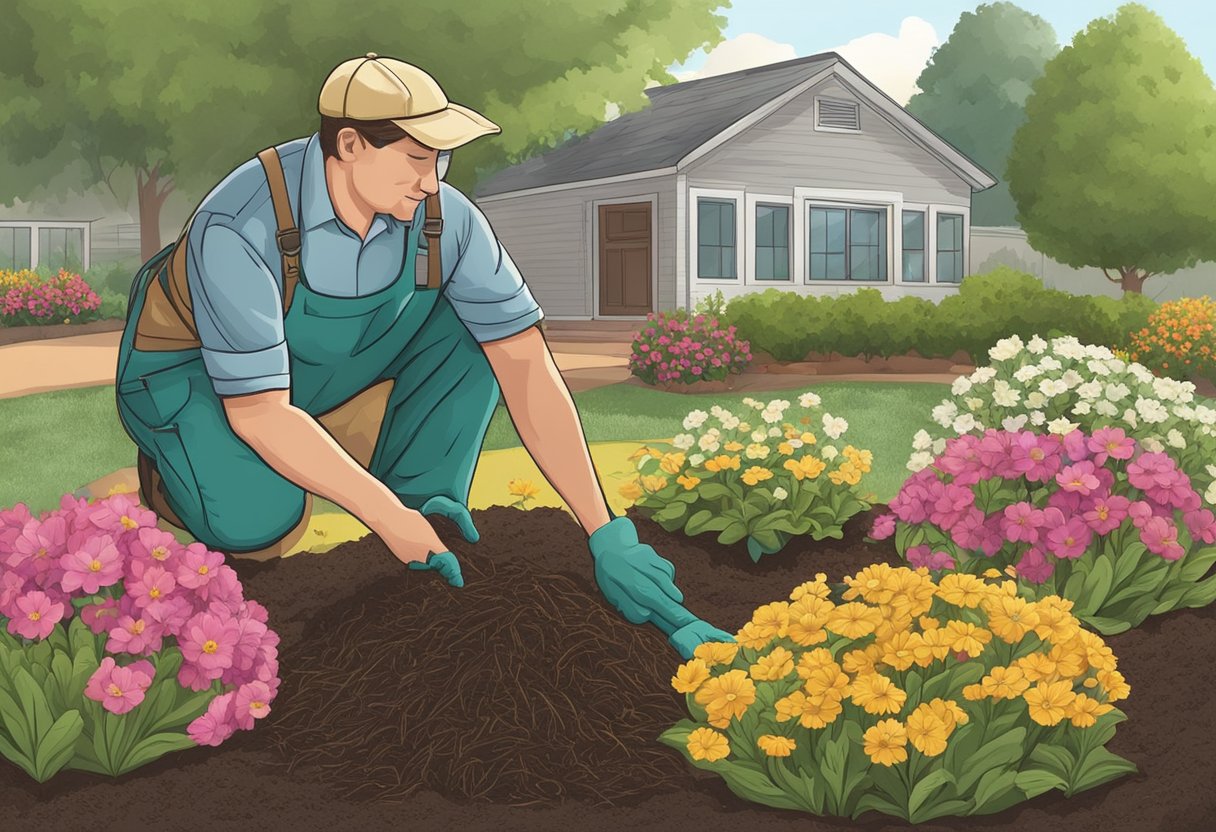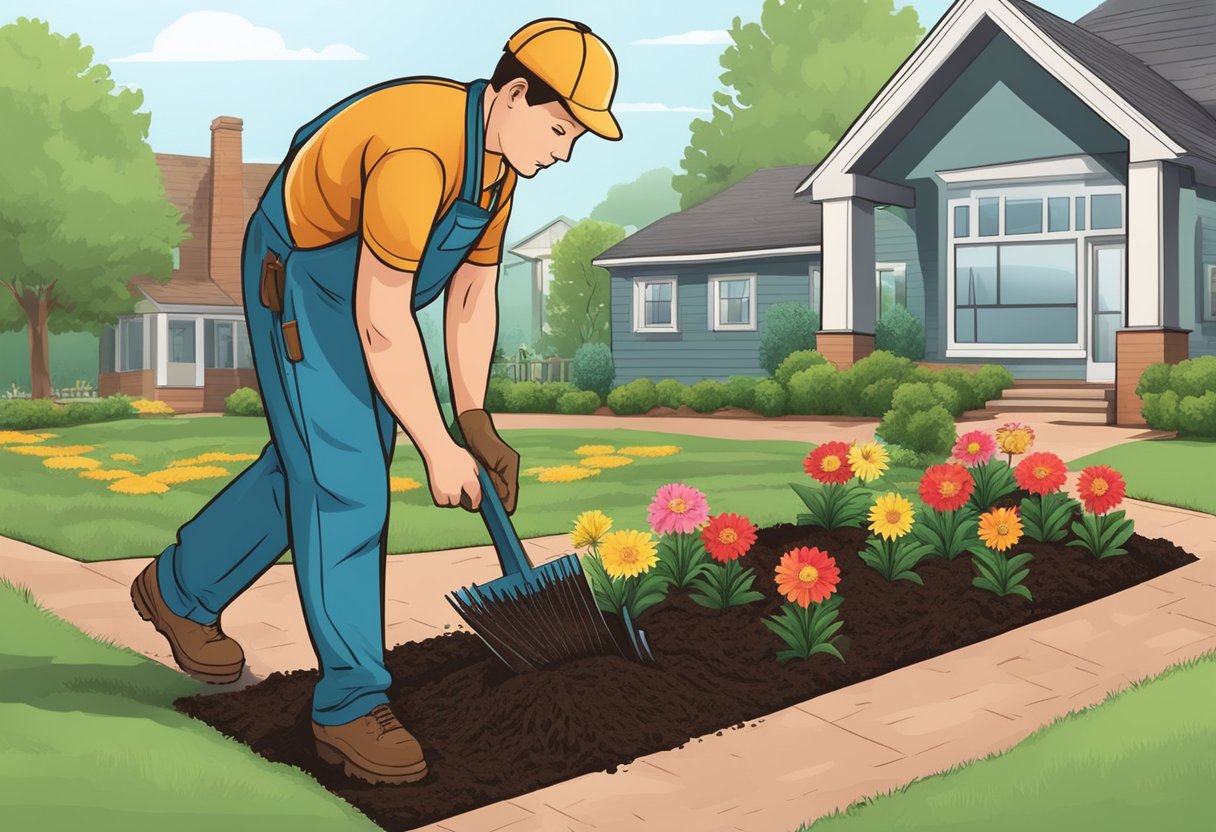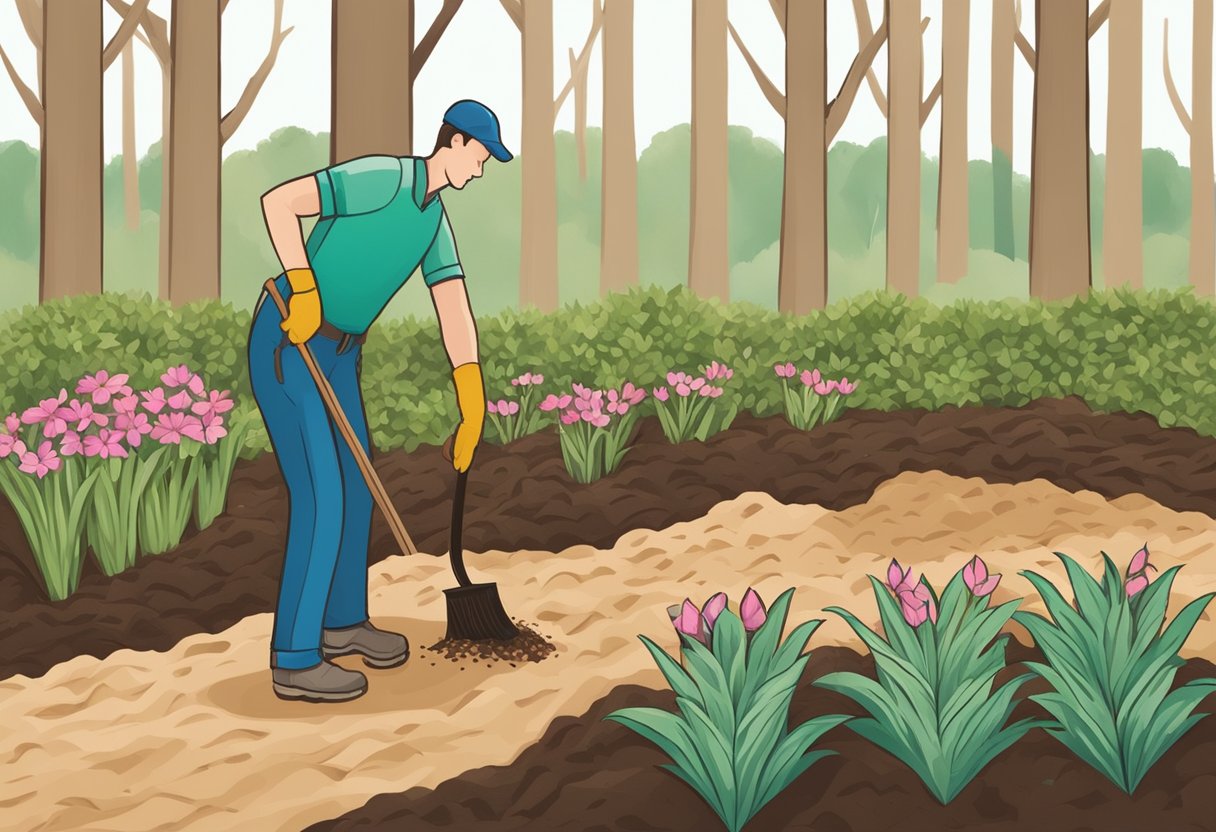Deciding whether to mulch before or after planting is a crucial step that directly affects the health and aesthetics of our gardens.
Mulching is a garden practice we use to protect soil, conserve water, and reduce weed growth.
As experienced gardeners, we understand that mulch serves as a protective layer over the soil, offering countless benefits for our plants.
A good rule of thumb is to apply mulch after planting. This ensures that the soil has warmed up adequately, especially during spring, which encourages stronger plant growth.

We recognize that each gardening situation may call for a different approach to mulching.
When we add mulch too early, it could impede the soil’s ability to warm, thereby slowing plant growth.
However, waiting until after our spring bulbs have emerged guarantees that the mulch does not smother the young plants.
We also consider the type of plants and their specific needs.
Vegetables, for instance, often benefit from being mulched after planting with an organic material like straw, which helps regulate soil temperature and moisture without robbing the plants of vital nitrogen.
In our experience, it’s essential to apply the appropriate amount of mulch.
About 2 to 4 inches of mulch is usually sufficient to keep the weeds at bay while allowing water to penetrate to the roots.
We avoid piling mulch against plant stems or tree trunks, as this can lead to issues with rot or pest infestations.
Mulching Basics

Mulching is a key practice in gardening that helps maintain soil moisture, suppress weeds, and enhance soil health.
Let’s explore how mulching benefits your garden, the optimal timing for mulching, and the types of mulch to consider.
Benefits of Mulching
- Moisture Retention: Mulch helps retain moisture in the soil, reducing the need for frequent watering and ensuring plants have a consistent supply.
- Weed Suppression: A layer of mulch inhibits weed growth by blocking sunlight, making our gardens less labor-intensive.
- Soil Health: Mulch breaks down over time, adding valuable organic matter and nutrients to the soil, which can encourage beneficial microorganisms.
When to Mulch
- After Planting: Apply mulch after seedlings reach 3-4 inches in height to ensure they receive enough light during germination.
- Seasonally: We mulch cool-weather crops at planting time and avoid mulching immediately before heavy rain or wind to prevent the mulch from being washed or blown away.
Types of Mulch
- Organic Mulch: Includes materials like bark, straw, manure, and compost. It decomposes over time, contributing organic matter and nutrients to the soil.
- Inorganic Mulch: Such as stones or landscape fabric, is more permanent but doesn’t improve soil structure or nutrient content.
| Organic Mulch | Benefits |
|---|---|
| Bark | Durable, adds texture to the garden |
| Straw | Excellent for vegetable gardens |
| Compost & Manure | Enriches soil with nutrients |
| Leaves | Provides insulation and nutrients |
In our garden, the choice between organic and inorganic mulch depends on the needs of our plants and the desired aesthetic. We always ensure that the mulch is applied at least an inch away from plant stems to prevent rot and damage to the roots.
Mulching Techniques

In our extensive experience with gardening, we’ve learned that applying the correct mulching technique is crucial for plant health and growth.
Layering for Optimal Growth
When we mulch our garden, we aim for a layer that is approximately 3-4 inches thick.
This helps to regulate soil temperature, maintain moisture levels, and suppress weed growth.
For optimal growth, we ensure the mulch does not touch plant stems or tree trunks to avoid rot.
Organic mulches like bark, straw, or leaf mold are beneficial because they break down over time, adding nutrients back into the soil.
| Material | Layer Thickness | Best For |
|---|---|---|
| Bark | 3-4 inches | Trees, Shrubs |
| Straw/Hay | 3-4 inches | Vegetable Gardens |
| Leaf Mold | 2-3 inches | Flower Beds, Perennials |
Mulching Specific Plants
We pay close attention to the needs of specific plants when mulching.
For example, vegetables like tomatoes and peppers thrive with organic mulch, which can prevent soil-borne diseases.
In contrast, we use gravel or rocks around succulents to improve drainage.
For annual flowers, we find that a thinner layer of mulch is sufficient, whereas woody mulch is ideal for trees and shrubs because it breaks down slowly.
Maintenance and Common Mistakes
Regular maintenance of our mulched areas involves checking the thickness of the mulch layer and replenishing as needed to maintain the balance for proper plant growth.
One common mistake we avoid is over-mulching, which can suffocate plant roots and encourage pests.
Using biodegradable landscape fabric beneath mulch can improve soil structure and facilitate drainage. Meanwhile, being mindful of the nitrogen content is essential. High-nitrogen materials like cow manure should be used carefully to avoid burning the plants.
- Do:
- Check mulch regularly for decomposition
- Replenish mulch to maintain proper depth
- Don’t:
- Pile mulch against plant stems or tree trunks
- Overlook the importance of nitrogen balance in soils